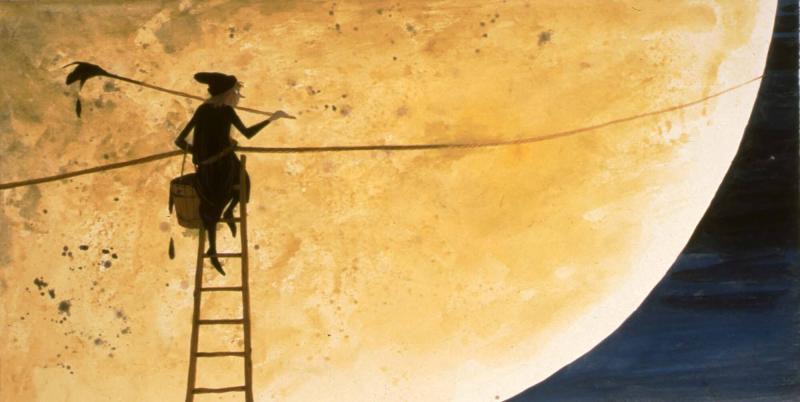OPEN CALL. Chasing the Devil to the Moon: What Does Art under Lunar Occupation Look Like?

The open call is extended until 24 March.
What if the Devil painted the Moon pitch black? The Moon Painters, (also Painting the Moon) a 19th-century Estonian folk tale retold by the Estonian-American writer Selve Maas, tells the story of the creation of the world when the Creator hung a huge ball of gold in the sky to light up the Earth at night. This displeased the Devil (or Vanapagan), for he needed the darkness to accomplish his work of enslaving the souls. So he set forth to paint the moon with tar, a task he partially succeeded in, only to be forever trapped on the Moon, in his own medium. The big craters, which we see today are the result of the Devil’s rage and tarry footprints, the story goes.
We live in a world where the premise of such fairy tales seems not far from our grasp. We may or may not believe in devils, but we have sent people to the Moon, have sold land on the moon, and have eyed its depth for precious resources. Determined by strong connections between science and capital and billionaires’ beliefs in the power of technology and innovation, the drive to colonise the moon is stronger than even in the days of geopolitical chest-puffing between the Soviet Union and the United States. Can changing the colour of the Moon be so far ahead of us?
Since the beginning of civilisation, the moon has mirrored and informed human beliefs, culture, and ways of seeing. Different cultures have their own historical, cosmological, ecological or religious conceptions of the moon, ascribing diverse meanings to its changes in appearance such as the aforementioned Estonian folk tale. Of course, such an endeavour opens up a series of debates and questions related to the ethics, responsibilities, practicalities, funding, reception, interpretation and sustainability of this project and others like it that interface art and the public.
Chasing the Devil to the Moon: What Does Art under Lunar Occupation Look Like? is an exhibition curated by Corina L. Apostol taking the form of an open call addressed to artists and creators from the Baltics for an artistic commission of recolouring the moon. Faced with such a not-so-improbable task, how would an artist or collective of artists go about it?
Proposals that take on this commission should raise questions and provide propositions and commentary that unpacks some of the issues at stake when taking on such a monumental task. The moon is an image of power and, at the same time, a new frontier for power – a site of inward and outward pressures, of the struggle for autonomy and colonial control. What are the role of art and the artist in these configurations of power? Focused on a single initial hypothetical that can be deconstructed from different philosophical, practical, political and social angles, artists are invited to consider the importance of context in art and culture, as it is perceived through our and others’ speculations. Unrestrained by budget considerations, this call is an invitation to imagine socially based, utopic, dystopic or ultimately unrealisable projects.
Submissions should include a one-page narrative text on your proposed work and its relationship to the legacy of the Estonian folk tale The Moon Painters; the notion of “colonisation of the Moon” and its reevaluation (if any) of any artistic form; a visual proposal in the form of three images; and an artist CV. Artists of any nationality are welcome to submit, but they must be based in the Baltic countries. Please send your submissions as a single word or PDF document to: minna@kunstihoone.ee. Deadline for submissions: 24 March 2023.
A select number of finalists will be awarded a stipend and an opportunity to further develop their proposal for an exhibition at the Tallinn Art Hall City Gallery opening in June 2023. Travel costs relating to the project within the Baltic states are covered.
Chasing the Devil to the Moon: What Does Art under Lunar Occupation Look Like? is based on the What Color Should the Moon Be? classroom curated by Corina L. Apostol and Kristaps Ancans for Art & Education: https://www.artandeducation.net/classroom/480925/what-color-should-the-moon-be


